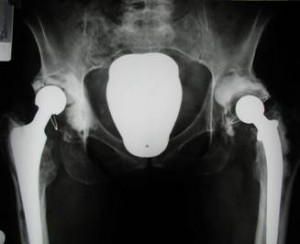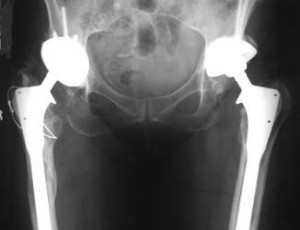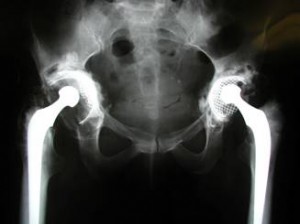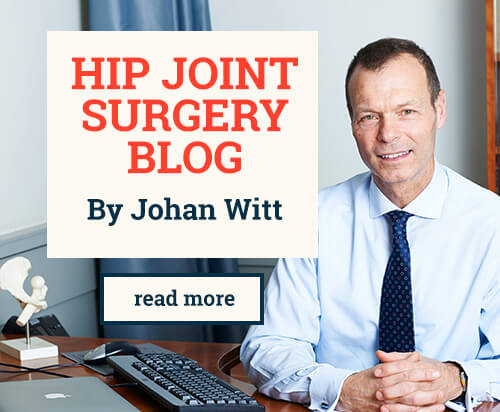Hip Revision
When a hip replacement becomes loose it usually leads to pain. We are now aware that the main factor causing hip replacements to loosen relate to wear particles released from the moving articulation. Once this process starts to happen the bone can start to be damaged and effectively eaten away (osteolysis). The effect of this is to make revision surgery more difficult because there is simply less bone to anchor an implant into. This requires a variety of techniques to restore bone and to re-gain strong fixation of the implant to the skeleton. The surgery is undoubtedly more complex and lengthy than a primary operation on the joint and does carry with it a higher complication rate. It does depend a lot on how damaged the bone has become. However, in the majority of cases it is possible to achieve a good result with good fixation of implants and the prospect of the hip continuing to function well.

Patient with loose cups and stems. Dark lines around the interface between the cement and bone indicate resorption and osteolysis.

Following revision with uncemented hip components there is good reconstitution of bone and good fixation of implants.





